We are often asked for a list of recommended books on Indian Boarding School history and experiences in the U.S. Knowing our history and speaking the truth are just the beginning of the ways in which we can bring about healing and transformation for ourselves, our families and communities, and our Nations here on Turtle Island. We are happy to share this sampling of books and we encourage you to share and read with others.
General Native American Boarding School History
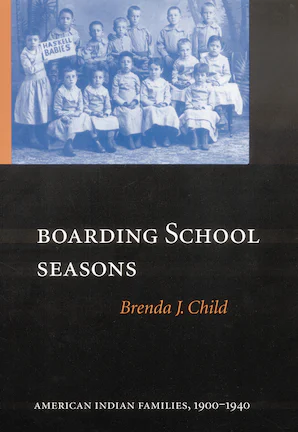
Boarding School Seasons: American Indian Families, 1900-1940
Child, Brenda J. (1998). University of Nebraska Press.
Drawing from hundreds of letters by students, parents, and school officials, Boarding School Seasons examines student experiences at three institutions between 1900 and 1940. Written by Dr. Brenda Child, a Red Lake Ojibwe woman and a descendant of boarding school survivors, this book primarily focuses on Haskell Institute (Kansas), Flandreau (South Dakota), and Pipestone (Minnesota). Dr. Child, who is a Professor of American Studies at the University of Minnesota, earned the 1995 North American Indian Prose Award for Boarding School Seasons.
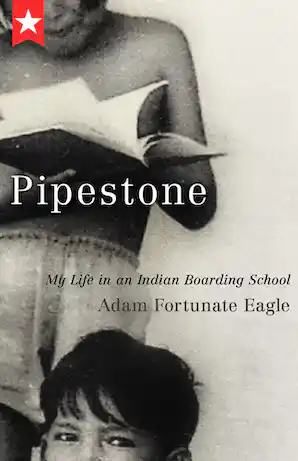
Pipestone: My Life in an Indian boarding school
Fortunate Eagle, Adam. (2012). University of Oklahoma Press.
Telling this history in the voice of when he was a student there, Adam Fortunate Eagle shares his experience at Pipestone Indian Boarding School in Minnesota between 1935 and 1945. This first-hand account offers unique insights regarding the diverse array of experiences that were seen in the Indian boarding school era. Pipestone: My Life in an Indian Boarding School delivers a narrative not often explored given positive personal anecdotes, student pranks, and the reminiscing of dormitory culture. Adam Fortunate Eagle (Red Lake Ojibwe) is perhaps best known as the principal organizer for the Occupation of Alcatraz between 1969 and 1971.

The Middle Five: Indian Schoolboys of the Omaha Tribe
La Flesche, Francis (1963). University of Wisconsin Press.
First published in 1900, The Middle Five is an autobiographical account of the Francis LaFlesche’s experience as a student in a Presbyterian boarding school in northeastern Nebraska. The personal stories of La Flesche (Omaha) are told in the voice of the students and shine light on what life was like for them. The book is a unique perspective, as La Flesche’s purpose of the text, in his own words, was “to present the companions of my own young days to the children of the race that has become possessed of the land of my fathers.”
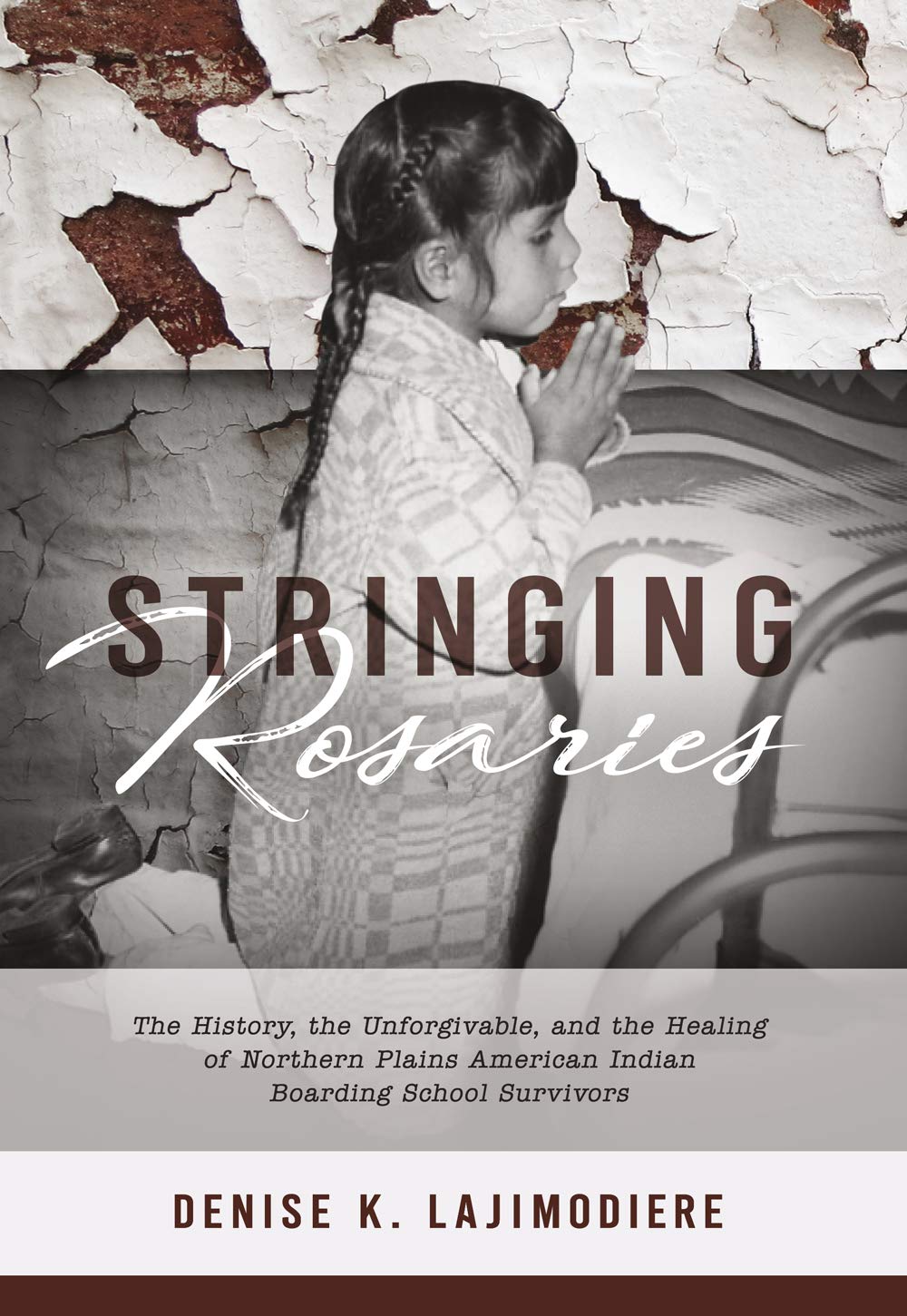
Stringing Rosaries: The History, the Unforgivable, and the Healing of Northern Plains American Indian Boarding School Survivors
Lajimodiere, Denise K. (2019). North Dakota State University Press.
Authored by education professor and former NABS board member, Dr. Denise K. Lajimodiere, this book explores the enduring impacts of the boarding school era in the Dakota's and Minnesota and the relationship they hold to historical and intergenerational trauma. Dr. Lajimodiere's research is an extension of her interest in the stories of her father and other family members who were subjected to and survived the federal governments' assimilation policy that compelled the proliferation of the boarding school model. The insights gained through her research invited Dr. Lajimodiere to more profoundly understand the way in which she and her siblings were raised, as well as other family members of whom were so closely impacted by the boarding school era. The book features sixteen interviews with boarding school survivors and is culminated by the author's own healing process with her father.
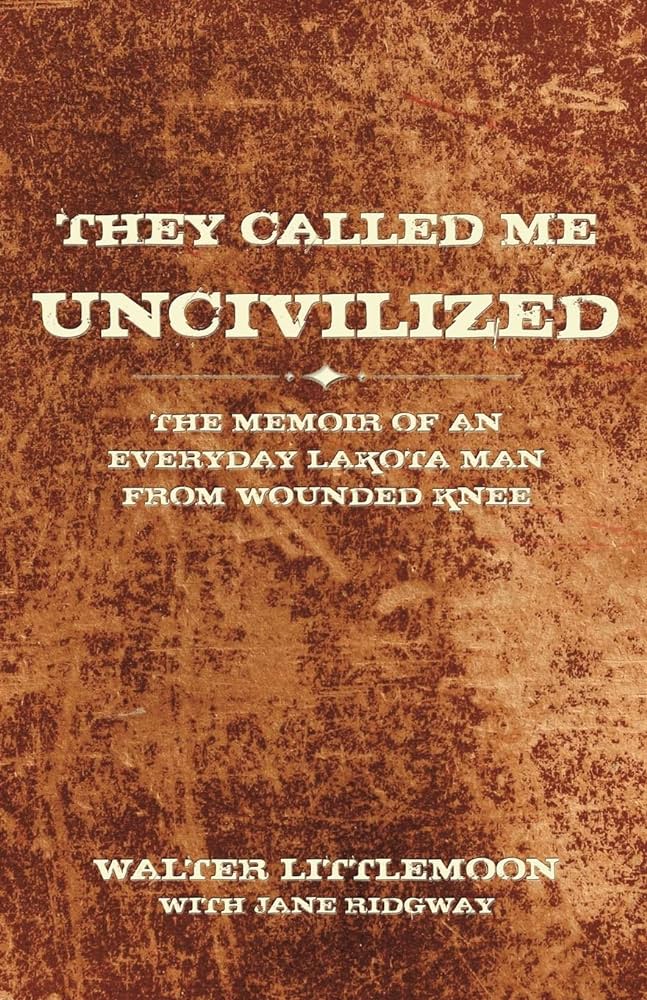
They Called Me Uncivilized: The Memoir of an Everyday Lakota Man from Wounded Knee
Littlemoon, Walter, & Ridgway, Jane. (2009). iUniverse.
Born in 1942 in Wounded Knee on the Pine Ridge reservation in South Dakota, Walter Littlemoon’s (Lakota) memoir, They Called Me Uncivilized, describes the impact that federal Indian policies had on his life and on the history of his family. This narrative offers a rare glimpse inside the cruelty of the U.S. government boarding school policy on to generations of Native American children. They Called Me Uncivilized also provides a unique view of the 1973 militant Occupation of Wounded Knee and the lasting impact that the takeover had on the community.
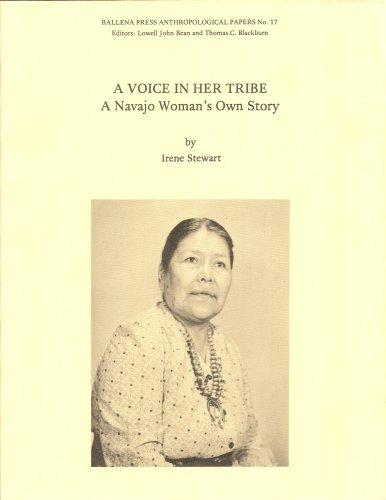
A Voice in Her Tribe: A Navajo Woman’s Own Story (D. O. Dawdy, Ed.)
Stewart, Irene. (1980). Ballena Press.
Irene Stewart’s (Dine/Navajo), A Voice in Her Tribe, is a powerful memoir that recounts her life from birth through childhood and beyond, including her time as an industrial school student. Her compelling testimony reflecting her industrial education experience characterizes the callous treatment first-hand. Stewart’s writing explores the unique challenges of biculturality as a Navajo woman in a changing world where imposed settler values and new systems of power and culture posed a great challenge to existing between two worlds.
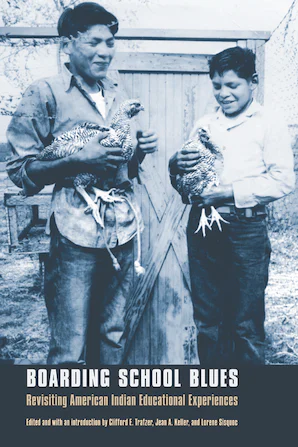
Boarding School Blues: Revisiting American Indian Educational Experiences
Trafzer, Clifford E., Keller, Jean A., & Sisquoc, Lorene (2006). University of Nebraska Press.
The boarding school experience became part of Native American history, with some students using this experience to expand their own knowledge and help their people. This volume of essays edited and introduced by Dr. Clifford Trafzer, Dr. Jean Keller, and Lorene Sisquoc (Fort Sill Apache/Cahuilla) documents a vast array of Native American boarding school experiences, both positive and negative. With a great range of voice, Boarding School Blues does well in addressing issues such as runaways, sports, punishment, Christianity, and the physical plants themselves.
Healing and Decolonization
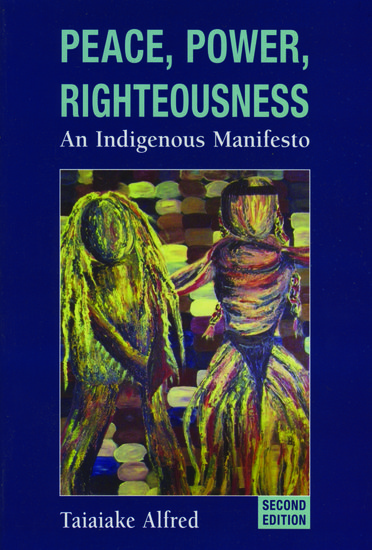
Peace, Power, Righteousness: An Indigenous Manifesto
Alfred, Taiaiake (2009). Oxford University Press.
Dr. Alfred Taiaiake (Kanienkehaka /Mohawk) puts forth a profound vision for the Indigenous Peoples of North America in this important manifesto. In Peace, Power, and Righteousness, Alfred invites Indigenous People to move beyond the 500-year history of pain, loss, and colonization, and move toward an engaged and liberatory form of self-determination. With an intimate knowledge and sensibility of the trauma of colonization, this volume calls for a way forward that is conscious of and honors traditional ways to educate a new generation of Indigenous leaders.
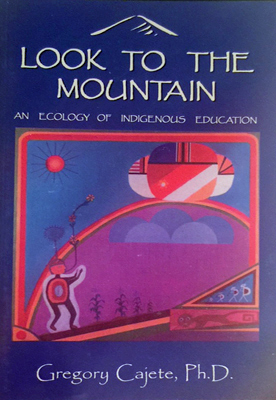
Look to the Mountain: An Ecology of Indigenous Education
Cajete, Gregory (1994). Kivakí Press.
Look to the Mountain is an invaluable resource for educators looking to ground their practice in Indigenous ways of knowing and being. Dr. Gregory Cajete is a Tewa Indian from Santa Clara Pueblo, New Mexico, and expertly draws profound distinctions between Indigenous ways of teaching and thinking and ones frequently seen in contemporary American education. This book deeply reconceptualizes what can be accomplished under the banner of Indigenous education, featuring a commitment to the foundations of the spiritual, environmental, mythic, visionary, artistic, affective, and the communal. Overall, Dr. Cajete shows that Indigenous education is a process of education that is grounded in the foundations of human nature.
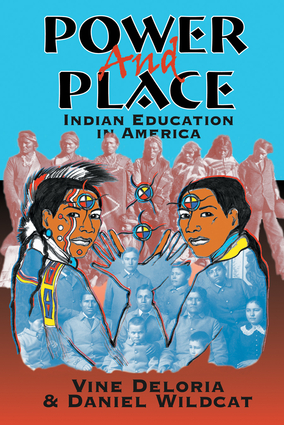
Power and Place: Indian Education in America
Deloria Jr., Vine, & Wildcat, Daniel R. (2001). Fulcrum Publishing.
In this volume of essays, Dr. Vine Deloria Jr. (Standing Rock Sioux) and Dr. Daniel R. Wildcat (Yuchee Creek) examine various issues facing Native American students in their experience in schools, colleges, and later into professional life. The visionary nature of Power and Place engages both philosophical and practical lessons for administrators, educators, students and community leaders in Indian Education. Deloria Jr. and Wildcat effectively reveal those unique nuances that Indigenous approaches to learning, knowing, and being can address the contradictions made apparent within contemporary American education.
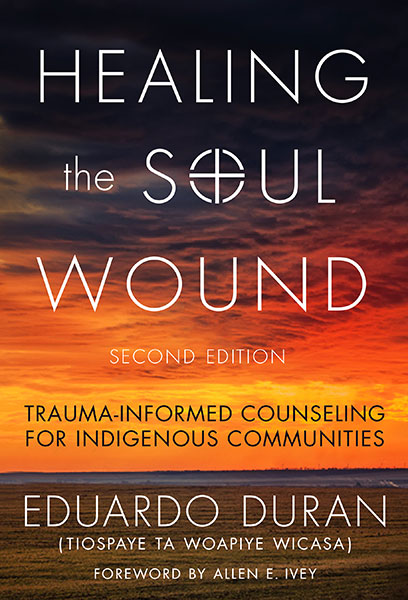
Healing the Soul Wound: Trauma-informed Counseling for Indigenous Communities
Duran, Eduardo. (2019). Teachers College Press.
As a clinical psychologist who has worked in Indian country for several decades, Dr. Eduardo Duran—who was born in New Mexico and also previously worked as a migrant farmworker—offers a uniquely subversive method of healing and counseling that is grounded in Indigenous ways of being. Healing the Soul Wound centers its focus on the legacy of historical trauma and explores theoretical Indigenous understanding of cosmology and how understanding natural law can lead to new ways of understanding and healing the psyche. This book offers a culture-specific approach that is often ignored in modern healing work.
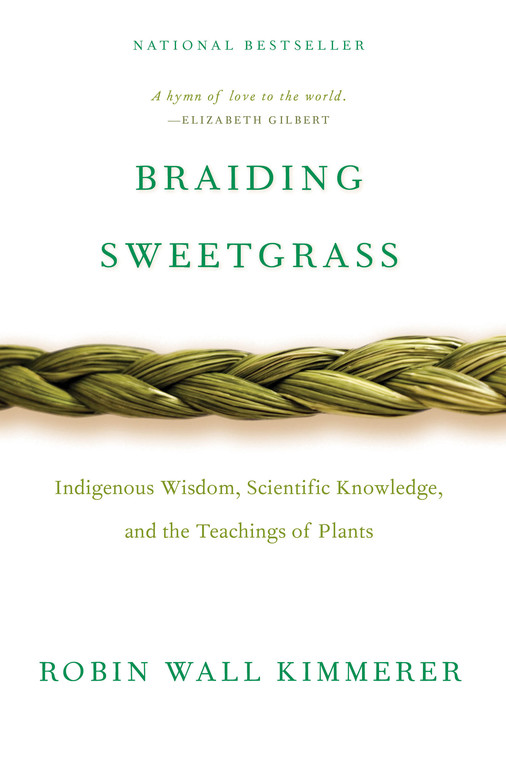
Braiding Sweetgrass: Indigenous Wisdom, Scientific Knowledge, and the Teachings of Plants
Kimmerer, Robin W. (2013). Milkweed Editions.
Braiding Sweetgrass poetically bridges modern theories of biology and ecology with ancestral wisdom and Indigenous consciousness. Dr. Robin Wall Kimmerer (Potawatomi) eloquently shows that by combining the knowledge of modern science and the traditional Indigenous understandings, we can more deeply engage in a world that is seeking to connect with us as a teacher and a relative. Reflecting that truth Kimmerer states, “Because the relationship between self and the world is reciprocal, it is not a question of first getting enlightened or saved and then acting. As we work to heal the earth, the earth heals us.”
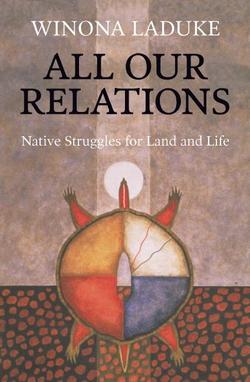
All Our Relations: Native Struggles for Land and Life
LaDuke, Winona. (1999). South End Press.
Charting the struggle of Native resistance against environmental and cultural degradation, Winona LaDuke (White Earth Ojibwe) offers an inspiring call toward self-determination and community through historical analysis, testimonies, and reflections. All Our Relations features chapters on the Seminoles, the Anishinaabeg, the Innu, the Northern Cheyene, and the Mohawk Nations, among others.
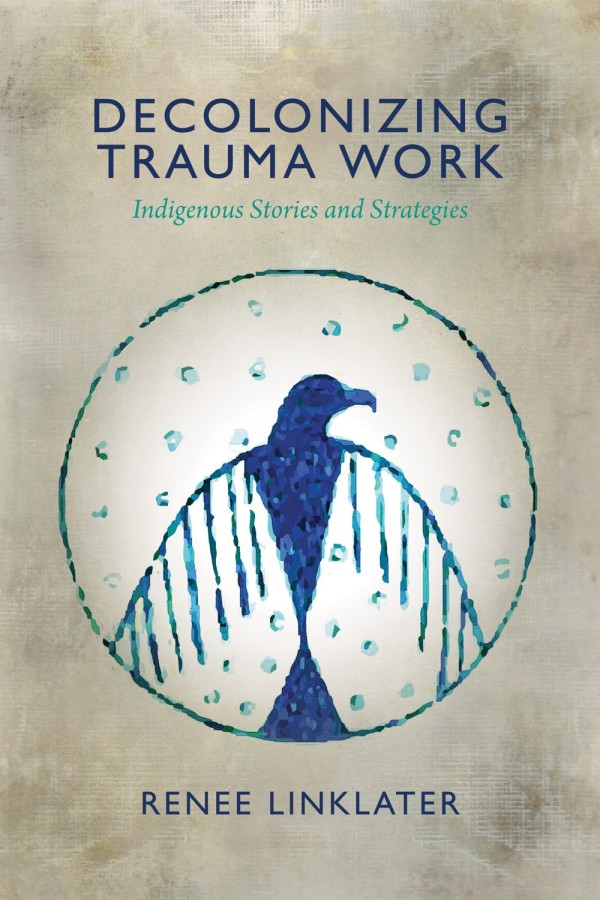
Decolonizing Trauma Work: Indigenous Stories and Strategies
Linklater, Renee. (2014). Fernwood Publishing.
One of the first books of its kind, Decolonizing Trauma Work, is an invaluable resource for those that work in healthcare, education, healing, clinical services, and policy writing, especially when it comes to healing and wellness in Indigenous communities. Dr. Renee Linklater (Rainy River First Nations) presents practical methods that are designed to support individuals and communities that have experienced trauma through an Indigenous worldview, embedded with cultural knowledge.
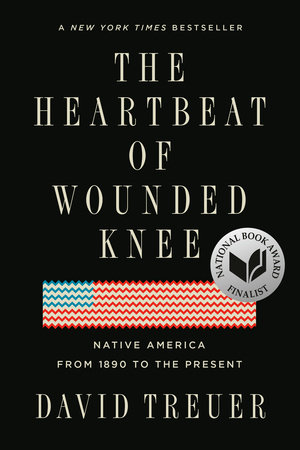
The Heartbeat of Wounded Knee: Native America from 1890 to the Present
Treuer, David. (2019). Penguin Publishing Group.
As is so often seen in culture, education, and politics, American history tends to neglect the stories of Native America past the Wounded Knee Massacre of 1890. Dr. David Treuer (Leech Lake Ojibwe) seeks to counter that narrative with The Heartbeat of Wounded Knee, a volume that combines history with memoir, exploring the evolving structures of colonial structures of legal and political maneuvers that resulted in further land seizures in the 20th century, as well as how Indian boarding schools were a crucial part of that strategy. This book is a powerful accounting of an era that has been noticeably missing from common historical accounts of the U.S.
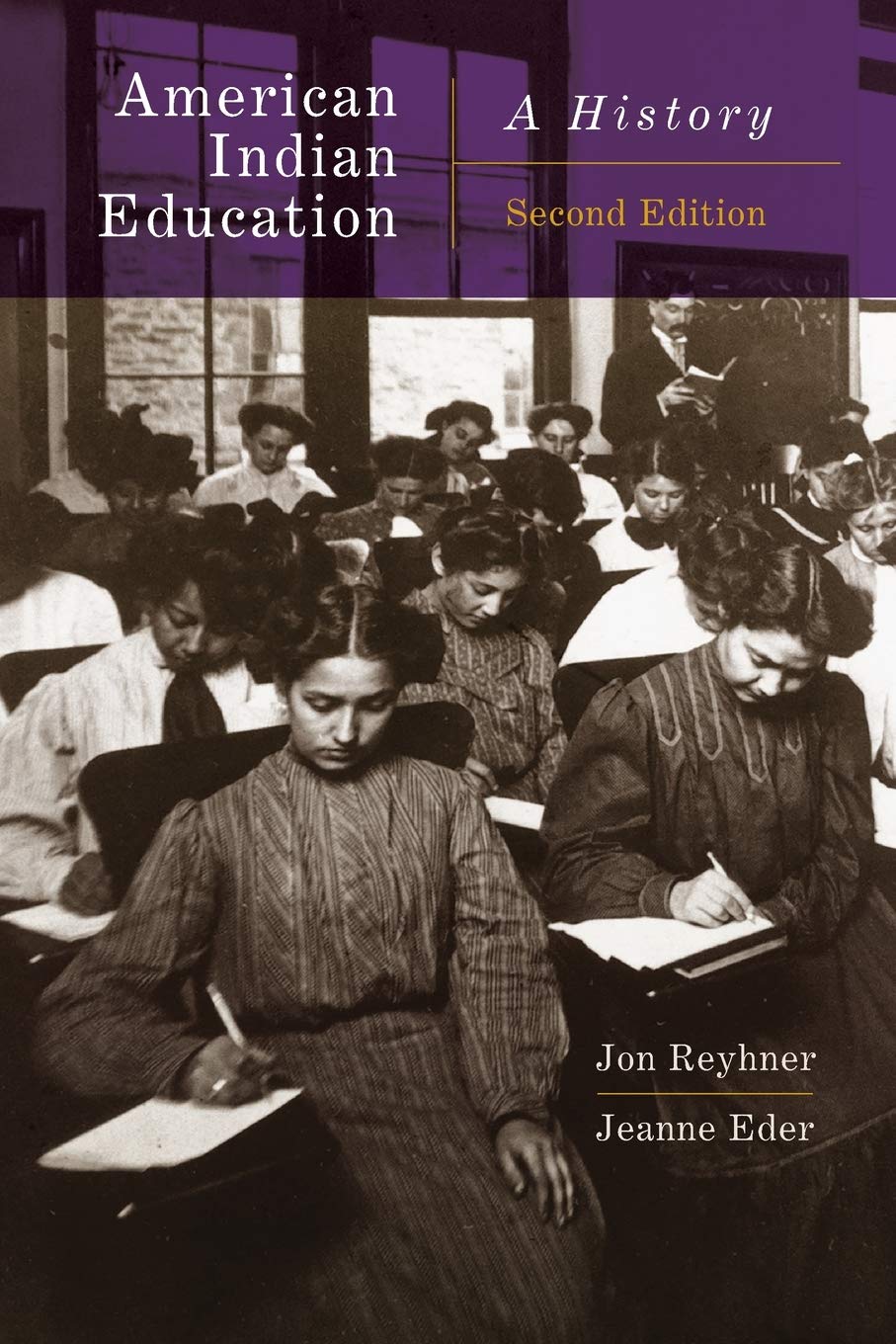
American Indian Education 2nd edition
Reyhner, Jon (2017) OUP
Before Europeans arrived in North America, Indigenous peoples spoke more than three hundred languages and followed almost as many distinct belief systems and lifeways. But in childrearing, the different Indian societies had certain practices in common—including training for survival and teaching tribal traditions. The history of American Indian education from colonial times to the present is a story of how Euro-Americans disrupted and suppressed these common cultural practices, and how Indians actively pursued and preserved them.
American Indian Education recounts that history from the earliest missionary and government attempts to Christianize and “civilize” Indian children to the most recent efforts to revitalize Native cultures and return control of schools to Indigenous peoples. Extensive firsthand testimony from teachers and students offers unique insight into the varying experiences of Indian education.
Historians and educators Jon Reyhner and Jeanne Eder begin by discussing Indian childrearing practices and the work of colonial missionaries in New France (Canada), New England, Mexico, and California, then conduct readers through the full array of government programs aimed at educating Indian children. From the passage of the Civilization Act of 1819 to the formation of the Bureau of Indian Affairs in 1824 and the establishment of Indian reservations and vocation-oriented boarding schools, the authors frame Native education through federal policy eras: treaties, removal, assimilation, reorganization, termination, and self-determination. Thoroughly updated for this second edition, American Indian Education is the most comprehensive single-volume account, useful for students, educators, historians, activists, and public servants interested in the history and efficacy of educational reforms past and present.
For Children and Young Adults
*Descriptions adapted from the publisher
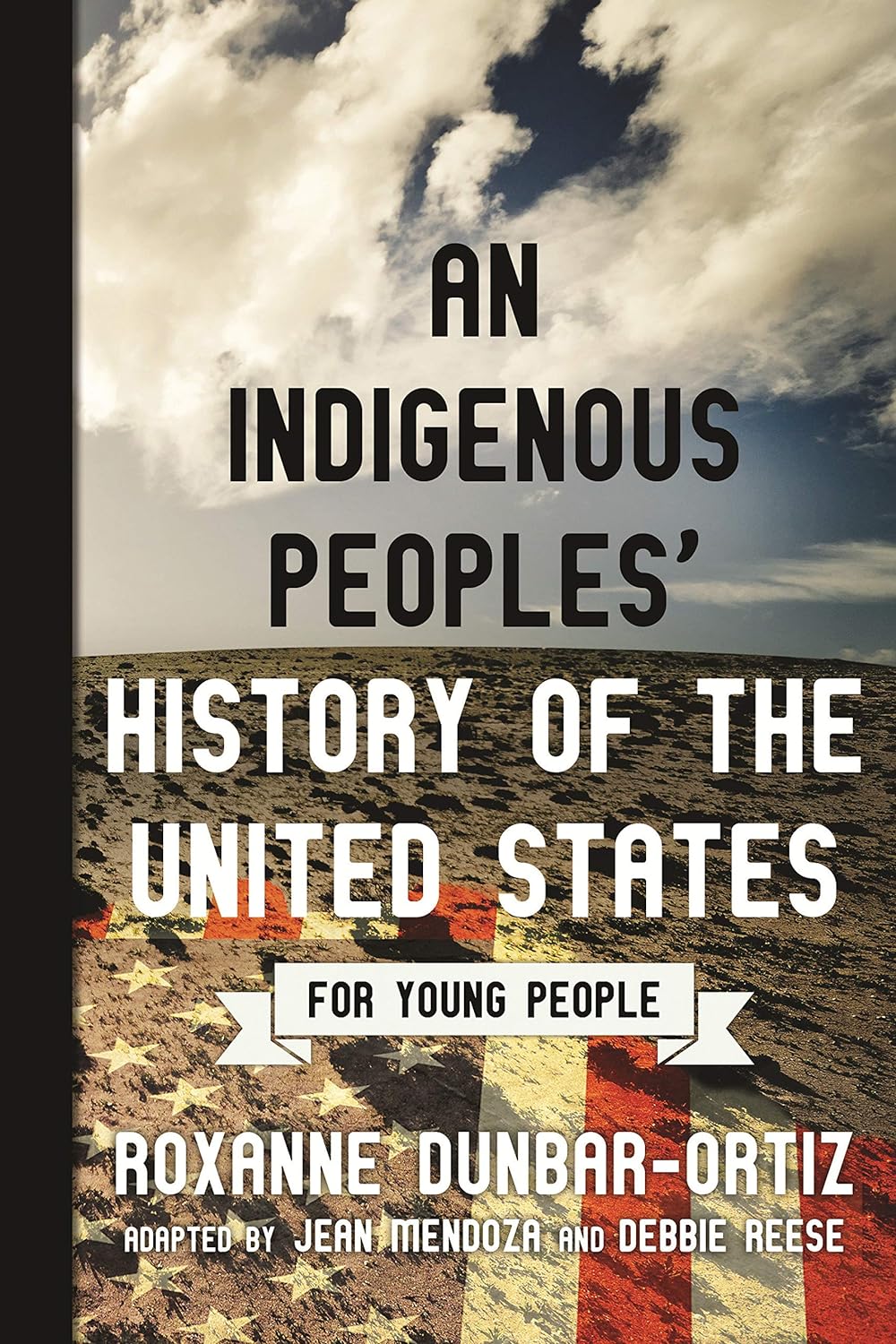
An Indigenous Peoples' History of the United States for Young People
Dunbar-Ortiz, Roxanne, Mendoza, Jean, & Reese, Debbie. (2019). Beacon Press.
(For grades 6-12)
An Indigenous Peoples’ History of the United States for Young People is a fully adapted text by renowned curriculum experts Debbie Reese (Nambé Pueblo) and Jean Mendoza. This text takes a similar shape to the original academic text by Roxanne Dunbar-Ortiz in content and theme, though re-framed to engage a younger audience. Designed primarily with middle-grade and young adult readers in mind, the book includes discussion topics, archival images, original maps, recommendations for further reading, and other materials to encourage students, teachers, and general readers to think critically about their own place in history.
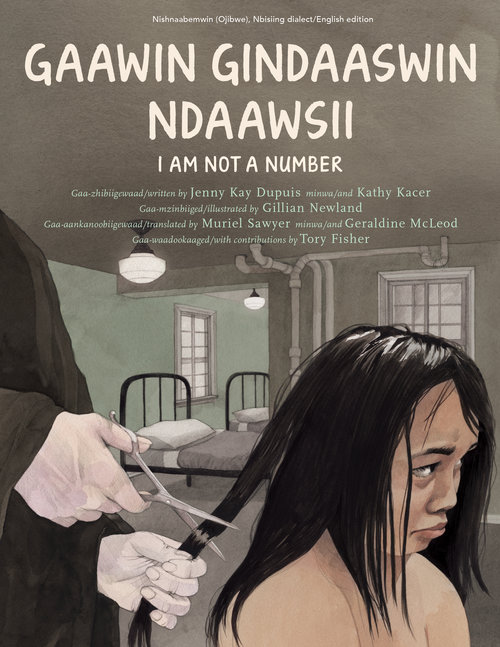
Gaawin Gindaaswin Ndaawsii / I Am Not a Number
Dupuis, Jenny K. & Kacer, Kathy. (2019). Second Story Press.
(Picture book: For grades 3-6)
When eight-year-old Irene is removed from her First Nations family to live in a residential school she tries to remember who she is and where she came from, despite the efforts of the nuns who are in charge at the school and who tell her that she is not to use her own name but instead use the number they have assigned to her. Irene's parents decide never to send her and her brothers away again. But where will they hide? And what will happen when her parents disobey the law? Based on the life of co-author Jenny Kay Dupuis’ (Ojibwe) grandmother, I Am Not a Number is a hugely necessary book that brings a terrible part of Canada’s history to light in a way that children can learn from and relate to. There are two versions of this book, one in English, and one in a dual-language version in Nishnaabemwin (Ojibwe) Nbisiing dialect and English.
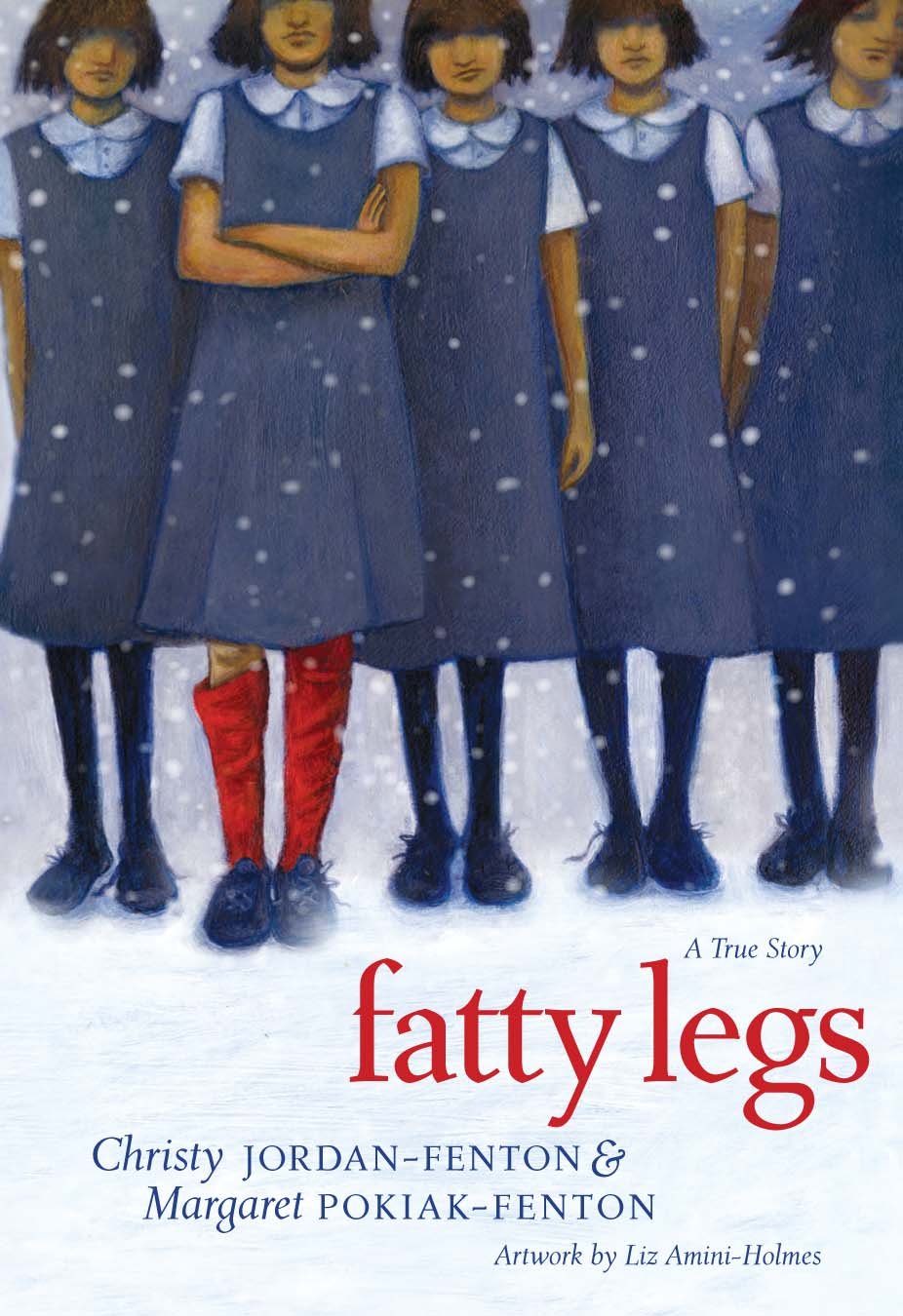
Fatty Legs: A True Story
Jordan-Fenton, Christy & Pokiak-Fenton, Margaret (2010). Annick Press, Limited.
(For grades 4-8)
Eight-year-old Margaret Pokiak has set her sights on learning to read, even though it means leaving her village in the high Arctic. Her father finally agrees but he warns Margaret of the terrors of residential schools. At school, Margaret soon encounters the Raven, a black-cloaked nun with a hooked nose and bony fingers that resemble claws. Intending to humiliate her, the heartless Raven gives gray stockings to all the girls — all except Margaret, who gets red ones. In the end, it is this brave young girl who gives the Raven a lesson in the power of human dignity. Written by Margaret Pokiak-Fenton (Inuit) and her daughter-in-law Christy Jordan-Fenton, Fatty Legs is complemented by archival photos from Pokiak-Fenton’s collection and striking art from Liz Amini-Holmes, this inspiring first-person account of a girl’s determination to confront her tormentor will linger with young readers in middle grades.
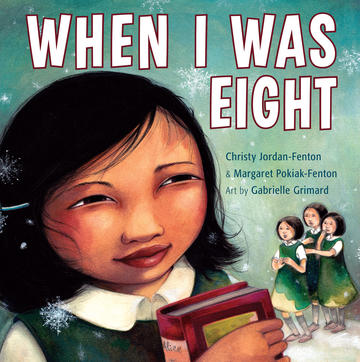
When I Was Eight
Jordan-Fenton, Christy & Pokiak-Fenton, Margaret (2013). Annick Press.
(Picture Book: For grades 1-5)
For Inuit children in boarding schools, the cost of learning to read English is a high one. Cutting their hair and taking their traditional clothing and name away is just the start of the systematic removal of identity and culture. When I Was Eight is a visceral telling of Margaret Pokiak-Fenton’s childhood in the form of a beautifully written and honest picture book that will reverberate with readers. This adaptation of Fatty Legs for younger grade readers evokes the same themes in a re-designed manner appropriate for early readers.
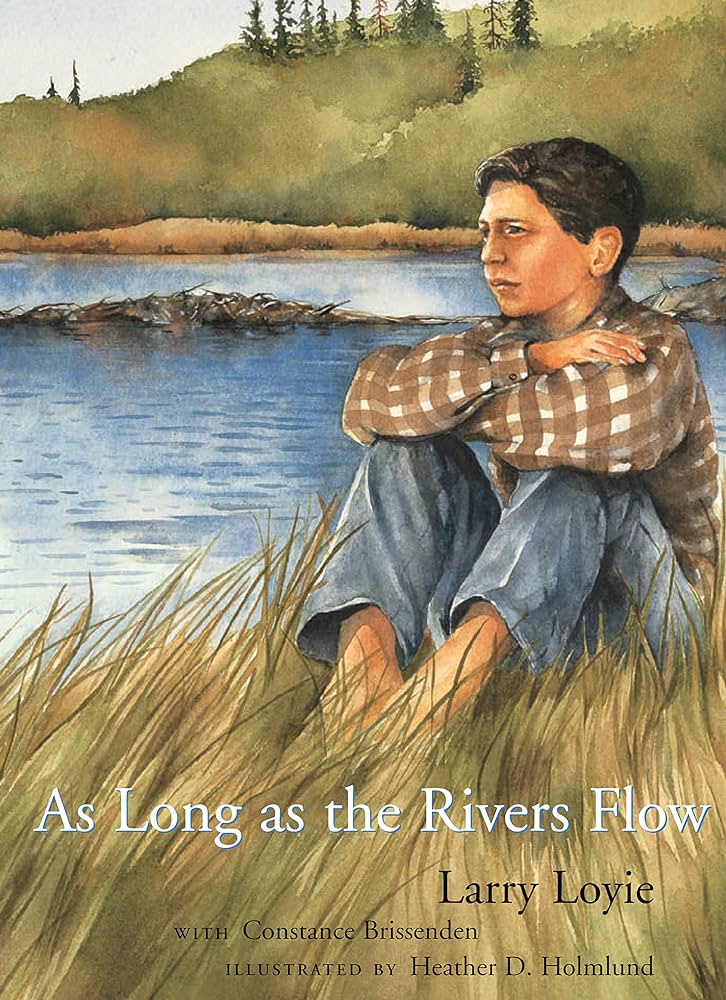
As Long as the Rivers Flow
Loyie, Larry, & Brissenden, Constance (2005). Groundwood Books.
(For grades 3-6)
In an attempt to erase language and culture from First Nation’s children, they were forcibly removed from their homes and sent away to government-sponsored church-run boarding schools. As Long as the River Flows shares the story of Larry Loyie's (Cree) last summer before entering residential school and all he learned and experienced before life changed forever.
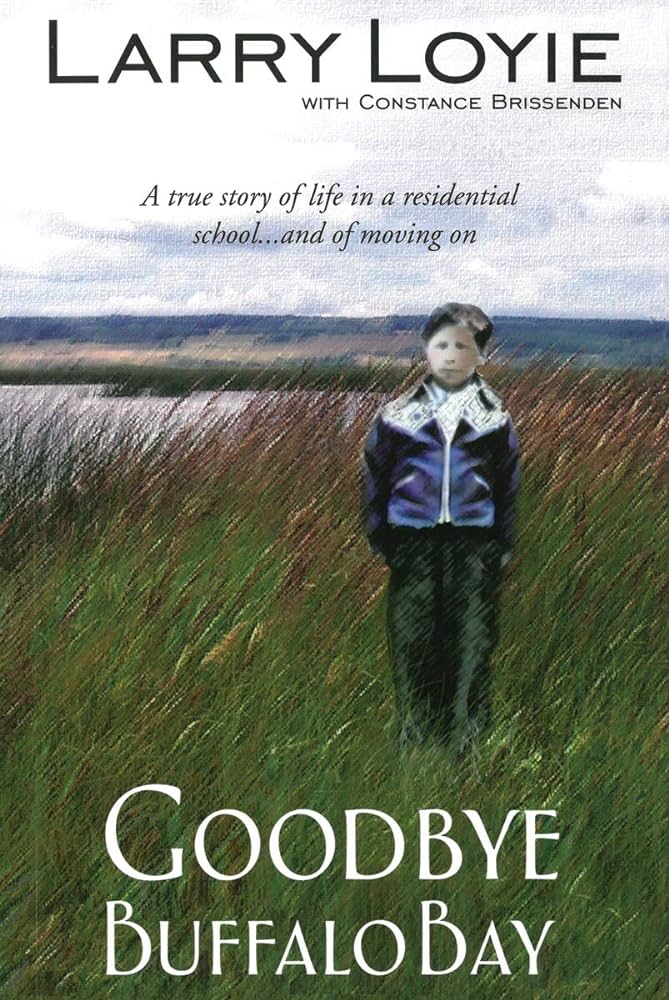
Goodbye Buffalo Bay
Loyie, Larry & Brissenden, Constance (2012). Theytus Books
(For grades 3-6)
Drama and humor combine in Goodbye Buffalo Bay by award-winning Cree author Larry Loyie. The sequel to As Long as the Rivers Flow, this book is set during the author's teenage years. In his last year in residential school, Lawrence learns the power of friendship and finds the courage to stand up for his beliefs. He returns home to find the traditional First Nations life he loved has changed dramatically. He feels like a stranger to his family until his grandfather's gentle guidance helps him find his way. Goodbye Buffalo Bay explores the themes of self-discovery, the importance of friendship, the difference between anger and assertiveness and the realization of youthful dreams.
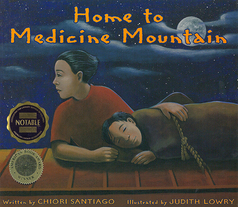
Home to Medicine Mountain
Santiago, Chiori (2002). Children's Book Press.
(Picture Book: For Grades 1-5)
In the 1930s two young brothers are sent to a government-run Indian residential school — an experience shared by generations of Native American children. At these schools, children are forbidden to speak their native tongue and are taught to abandon their Indian ways. In this multi-award-winning book, Native American artist Judith Lowry’s illustrations are inspired by the stories she heard from her father and uncle. The lyrical narrative and compelling paintings blend memory and myth in this bittersweet story of the boys’ journey home one summer and the healing power of their culture.
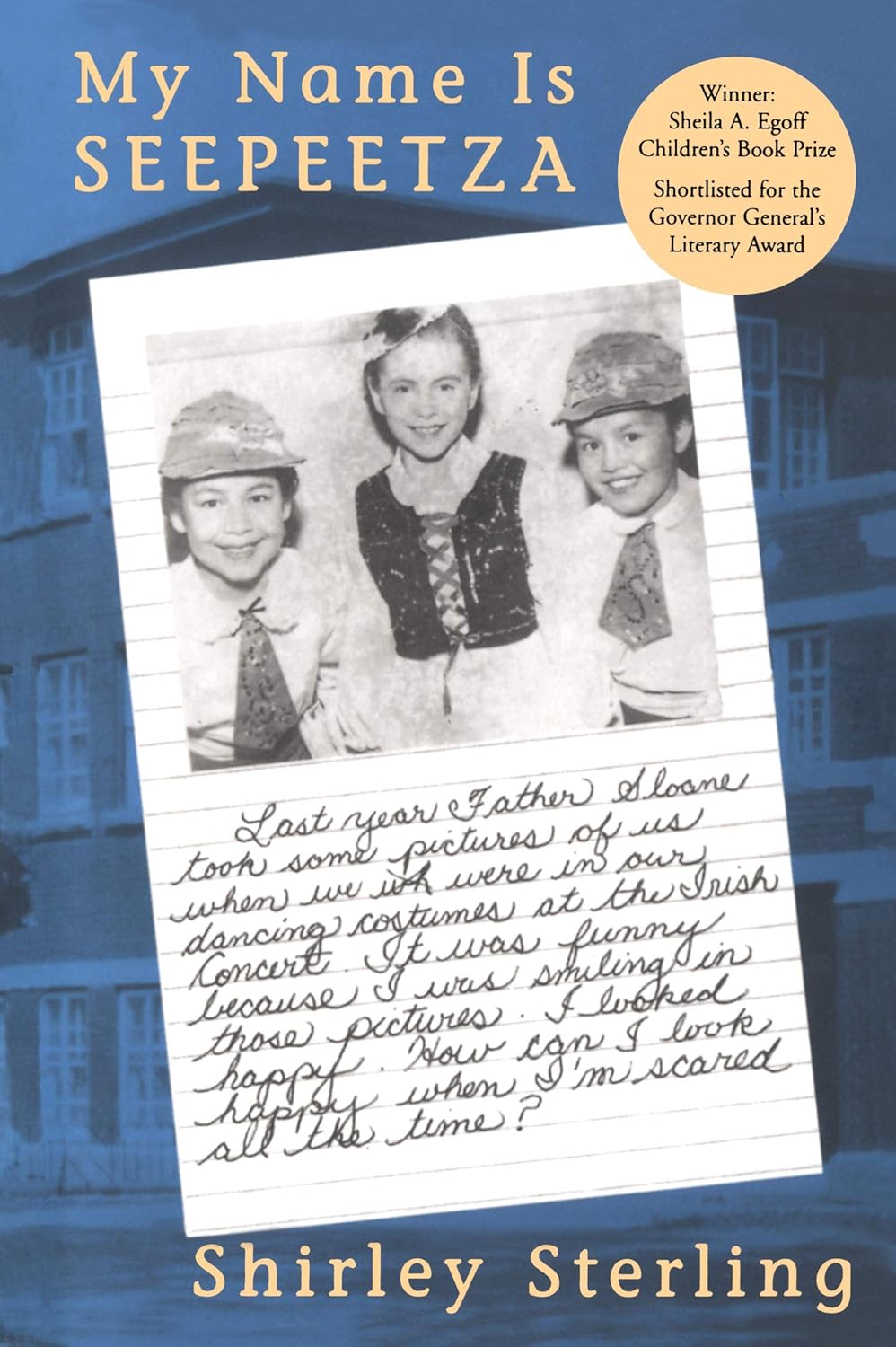
My Name is Seepeetza
Sterling, Shirley (1992). Publishers Group West.
(For grades 4-8)
Her name was Seepeetza when she was at home with her family. But now that she's living at the Indian residential school her name is Martha Stone, and everything else about her life has changed as well. Told in the honest voice of a sixth-grader, this is the story of a young Native girl forced to live in a world governed by strict nuns, arbitrary rules, and a policy against talking in her own dialect, even with her family. Seepeetza finds bright spots, but most of all she looks forward to summers and holidays at home.
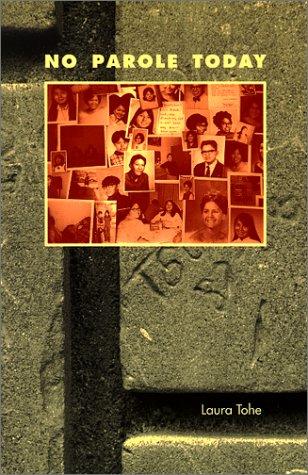
No Parole Today
Tohe, Laura (1999). West End Press.
(For grades 7 and up)
This collection, in prose memoir and poetry, describes attending a government school for Indian children and the challenges presented socially, culturally, and expressively. Dr. Laura Tohe (Diné) was born in Fort Defiance, Arizona, and grew up on the Navajo Reservation in Arizona and New Mexico. When they moved to Crystal, New Mexico, Tohe’s mother worked at a boarding school close by. This book originates from a story given to her mother by her great-grandmother. Dr. Tohe—who is also a Navajo Nation Poet Laureate (2015-2019) is a professor emerita of English at Arizona State University.
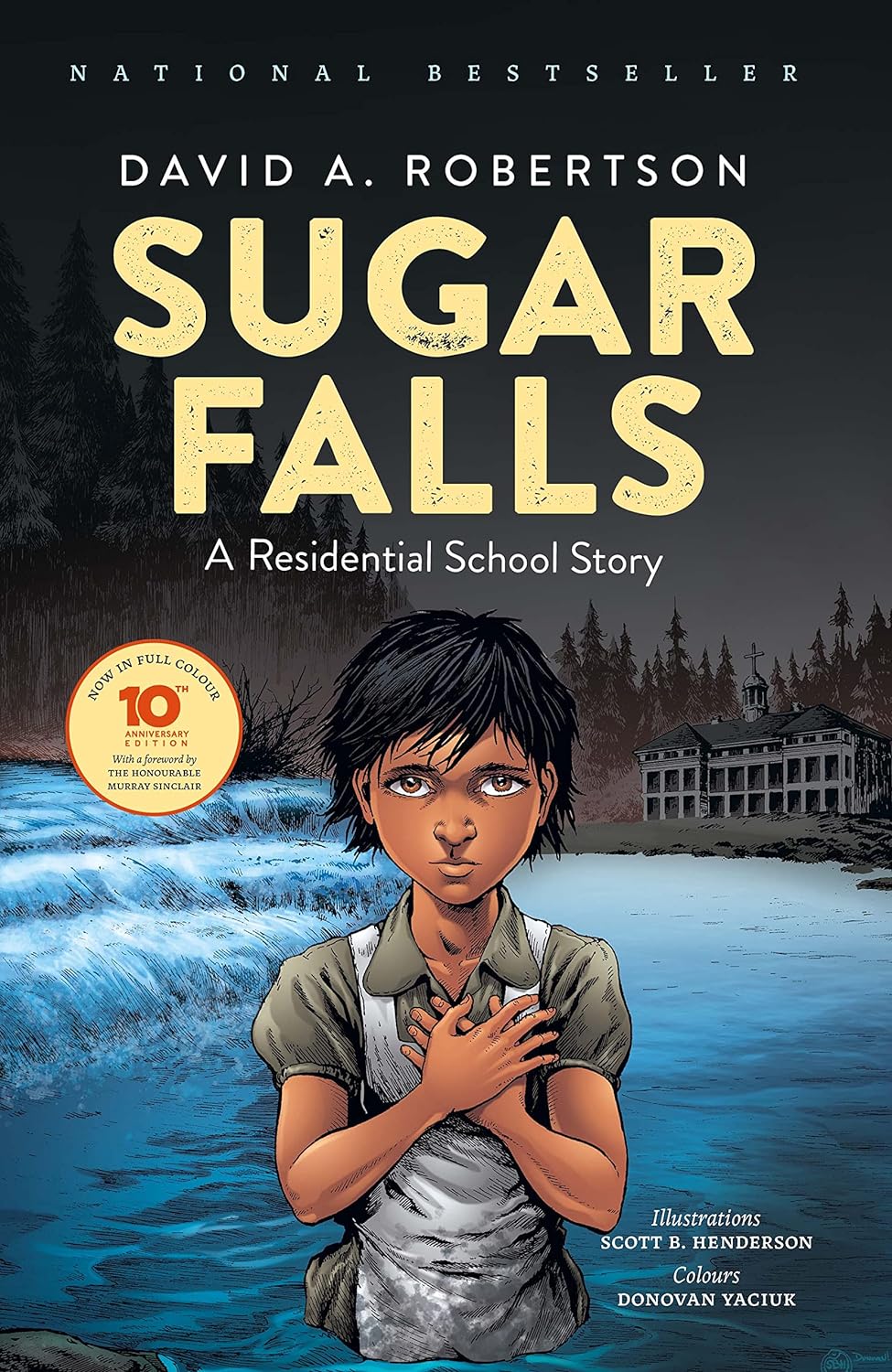
Sugar Falls: A Residential School Story
Robertson, David (2021) HighWater Press
(For grades 6 and up)
Inspired by true events, this story of strength, family, and culture shares the awe-inspiring resilience of Elder Betty Ross.
Abandoned as a young child, Betsy is adopted into a loving family. A few short years later, at the age of 8, everything changes. Betsy is taken away to a residential school. There she is forced to endure abuse and indignity, but Betsy recalls the words her father spoke to her at Sugar Falls―words that give her the resilience, strength, and determination to survive.
Sugar Falls is based on the true story of Betty Ross, Elder from Cross Lake First Nation. We wish to acknowledge, with the utmost gratitude, Betty’s generosity in sharing her story. A portion of the proceeds from the sale of Sugar Falls goes to support the bursary program for The Helen Betty Osborne Memorial Foundation.
This 10th-anniversary edition brings David A. Robertson’s national bestseller to life in full color, with a foreword by The Hon. Murray Sinclair, Chair of the Truth and Reconciliation Commission of Canada, and a touching afterword from Elder Betty Ross herself.
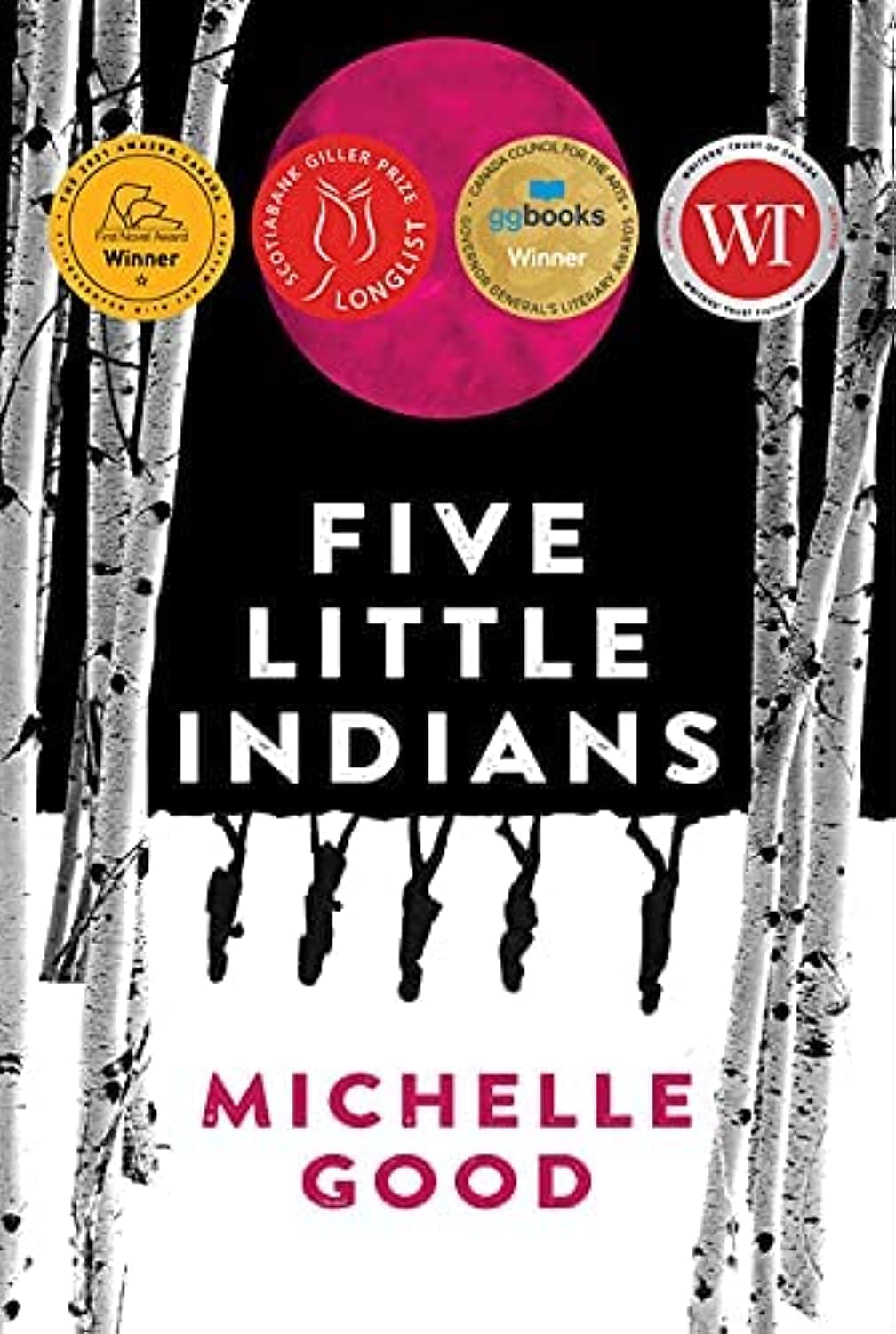
Five Little Indians
Good, Michelle (2020) Harper Perennial
(For grades 7 and up)
Taken from their families when they are very small and sent to a remote, church-run residential school, Kenny, Lucy, Clara, Howie and Maisie are barely out of childhood when they are finally released after years of detention.
Alone and without any skills, support or families, the teens find their way to the seedy and foreign world of Downtown Eastside Vancouver, where they cling together, striving to find a place of safety and belonging in a world that doesn’t want them. The paths of the five friends cross and crisscross over the decades as they struggle to overcome, or at least forget, the trauma they endured during their years at the Mission.
Fuelled by rage and furious with God, Clara finds her way into the dangerous, highly charged world of the American Indian Movement. Maisie internalizes her pain and continually places herself in dangerous situations. Famous for his daring escapes from the school, Kenny can’t stop running and moves restlessly from job to job—through fishing grounds, orchards and logging camps—trying to outrun his memories and his addiction. Lucy finds peace in motherhood and nurtures a secret compulsive disorder as she waits for Kenny to return to the life they once hoped to share together. After almost beating one of his tormentors to death, Howie serves time in prison, then tries once again to re-enter society and begin life anew.
With compassion and insight, Five Little Indians chronicles the desperate quest of these residential school survivors to come to terms with their past and, ultimately, find a way forward.
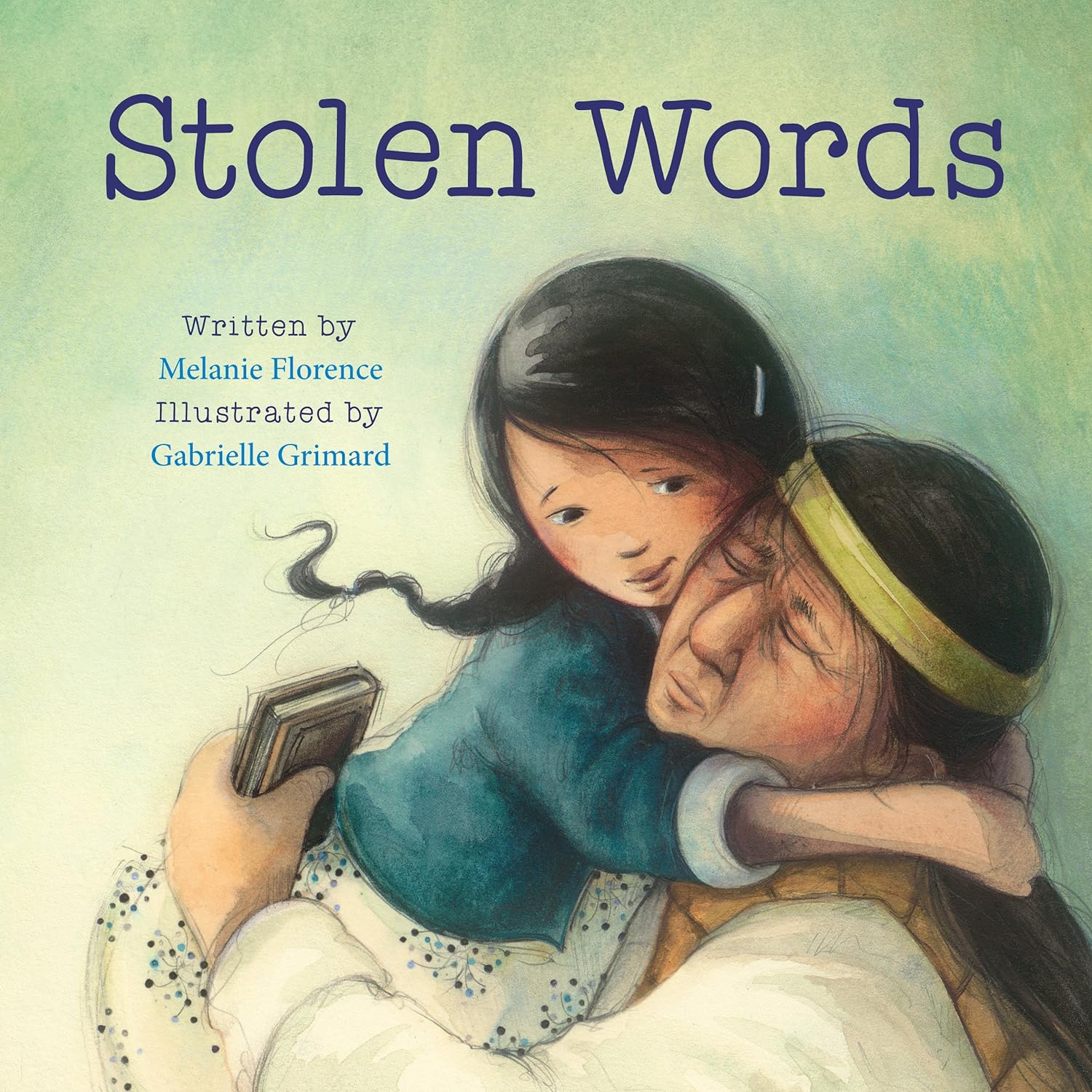
Stolen Words
Florence, Melanie (2017) Second Story Press
(For grades 1st and up)
The story of the beautiful relationship between a little girl and her grandfather. When she asks her grandfather how to say something in his language – Cree – he admits that his language was stolen from him when he was a boy. The little girl then sets out to help her grandfather find his language again. This sensitive and warmly illustrated picture book explores the intergenerational impact of the residential school system that separated young Indigenous children from their families. The story recognizes the pain of those whose culture and language were taken from them, how that pain is passed down, and how healing can also be shared.




